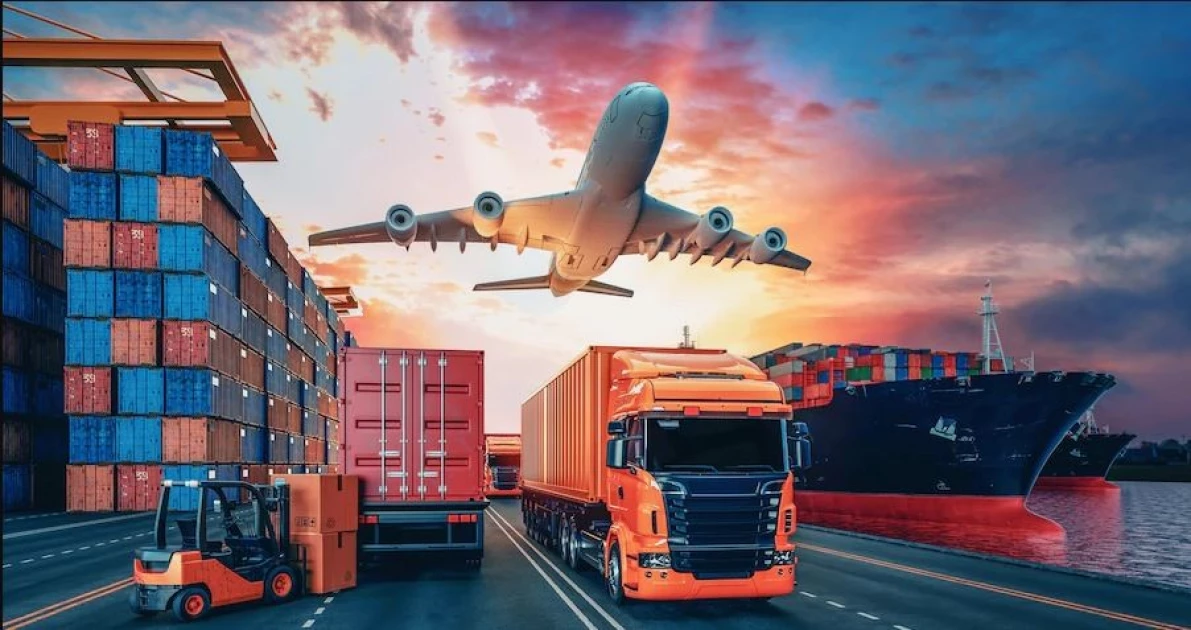Diaz: The Future of global logistics - smarter, faster, greener


Audio By Carbonatix
Global logistics is the management of the movement of goods, services, and information across international borders and involves the coordination of transportation, warehousing, customs clearance, inventory management, and technology systems to ensure efficient global supply chains.
Global logistics is the backbone of international commerce
and connects the world by ensuring products get from the source of manufacture
or assembly to the point of consumption the most efficient, cost-effective, and
timely manner possible. Aviation logistics is the fastest growing with
aircrafts numbers flying will increase from 20,000 to over double, nearly
40,000 aircrafts moving passengers and cargo globally.
Global logistics has evolved dramatically over centuries,
driven by trade, technology, and globalization. Early logistics began with
trade routes like the Silk Road and maritime shipping, where merchants relied
on caravans and basic navigation tools to transport goods across continents.
The advent of steamships, railroads, and mechanized
production revolutionized logistics as bulk transportation of goods became
faster and more efficient, laying the groundwork for modern-day supply chains.
In the 20th century during the world wars, military logistics drove innovations
in inventory management, transportation, and coordination while the rise of
containerization in the 1950s transformed global shipping, standardizing cargo
movement and drastically reducing costs and transit times.
The expansion of global markets and trade agreements in the
1980s and 90s increased cross-border logistics demand, prompting investment in
infrastructure and multinational supply chains.
Today, technology has become central with companies adopting
Enterprise Resource Planning (ERP) systems, GPS tracking, and warehouse
automation. E-commerce is booming and requires faster and more flexible
logistics solutions.
Logistics is increasingly becoming tech-driven—with
Artificial Intelligence (AI), robotics, Internet of Things (IoT), and
blockchain shaping operations. Sustainability, speed, and resilience are now
key pillars, redefining how goods move globally in an interconnected, digital
world. These technologies are not only streamlining operations but also
enabling companies to predict demand, monitor real-time shipments, and enhance
decision-making.
AI-powered algorithms can now optimize delivery routes,
reducing fuel consumption and cut costs. IoT devices—sensors, trackers, and
RFID tags—are providing end-to-end visibility, ensuring that cargo is monitored
every step of the way. This level of transparency boosts accountability and
helps businesses manage risks like delays or theft more effectively.
Meanwhile, blockchain is finding its place in logistics by
offering secure, tamper-proof records of transactions and shipping data. This
enhances trust across the supply chain and simplifies complex processes like
customs clearance.
Automation is no longer limited to factory floors. In
warehouses around the world, autonomous mobile robots (AMRs) are increasingly
being used to pick, pack, and sort parcels. These robots increase speed and
accuracy while reducing labor costs.
Drones and autonomous delivery vehicles are also being
tested for last-mile delivery. This is usually an expensive and logistically
complex leg of the journey and while regulatory and infrastructure challenges
remain, pilot programs in several countries have shown promising results.
In the USA for example, Amazon (Prime Air), UPS, Google’s
Wing, and Starship Technologies are deploying the use of drone deliveries and
autonomous ground robots for the delivery of small packages in rural and
suburban areas and food and parcels on college campuses and urban
neighborhoods. In Germany, DHL (Parcelcopter) is conducting drone delivery
trials for medical supplies and urgent parcels in rural Bavaria.
Africa is also seeing exciting developments in drone and
autonomous delivery technologies, particularly in areas where traditional
infrastructure is limited or where speed is critical, such as healthcare
logistics. In Rwanda, Kenya and Ghana, Zipline, a company that has been
operating since 2016, delivering blood, vaccines, and medical supplies to
remote clinics and hospitals is utilizing the use of drones for medical
deliveries and has made tens of thousands of deliveries, significantly reducing
delivery times from hours to minutes.
The explosive growth of e-commerce has forced the logistics
sector to adapt quickly. E-commerce today contributes significantly to retail
business with e-commerce sales experiencing significant growth, with
projections estimating global retail e-commerce sales to reach $6.8 trillion by
2028.
Africa's e-commerce market reached approximately 317 billion
dollars in 2024 and is projected to grow at a compound annual growth rate
(CAGR) of 13.8%, reaching 1.017 trillion dollars by 2033. Customers want fast,
flexible, and low-cost delivery options—and they expect real-time updates on
their orders. To meet these demands, logistics providers are investing in
distributed warehousing, predictive analytics, and smarter fleet management
systems.
Micro-fulfillment centers, located closer to urban areas,
are gaining traction. These facilities allow retailers to store high-demand
items near consumers, reducing delivery time and costs. In the future, we can
expect a hybrid model where regional distribution centers work in tandem with
hyperlocal hubs.
The current generation is taking environmental conservation
seriously and sustainability is no longer a “nice-to-have” but has become a
business imperative. With increasing pressure from regulators, investors, and
consumers, logistics companies are increasingly rethinking their environmental
footprint.
Electric delivery vans, cargo bikes, and hydrogen-powered
trucks are replacing traditional diesel vehicles and companies like UPS, DHL,
and Amazon have announced major commitments to electrify their fleets in the
coming years.
In maritime shipping which is the backbone of global trade,
there’s been a push toward greener fuels, such as liquefied natural gas (LNG),
ammonia, and methanol and ports are investing in onshore power and
emissions-reducing infrastructure to support the transition. Carbon-neutral
logistics is therefore becoming a competitive advantage, with more companies
offering carbon-offset shipping options and building sustainability into their
value propositions.
The COVID-19 pandemic, the Russia-Ukraine war, and
disruptions like the Suez Canal blockage have exposed vulnerabilities in global
supply chains in recent years forcing resilience to become a top priority in
logistics planning.
This means diversifying suppliers, nearshoring production,
and investing in digital twins—virtual models of supply chains that help
simulate and prepare for potential disruptions. Companies must be able to pivot
quickly in response to changing conditions, whether it's a natural disaster,
geopolitical conflict, or sudden demand spike thus making flexibility and
agility key to modern logistics planning.
However, even in a future where processes are heavily
automated, human resources and high performance of leadership remain essential.
Companies face a growing skills gap, especially in areas like data science,
systems integration, digital business and cybersecurity. Investments in
training and skills programs will be crucial to ensure that the workforce can
keep up with digital transformation.
The future of global logistics is being shaped by a powerful
mix of technology, sustainability, and shifting consumer behavior. It's faster,
smarter, and greener than ever before but it is also more complex and
unpredictable.
Businesses that invest in digital tools, build resilient
networks, and commit to sustainable practices will be best positioned to thrive
in this new era. And as innovation continues to accelerate, logistics won’t
just be about moving goods but also about moving goods efficiently, smarter,
reduce wastage and costs, delivering high value services.
The future of global logistics will be driven by private and
public partnerships and to increase intra continental business and global
economic transformation.
Chris Diaz
Business leader


Leave a Comment